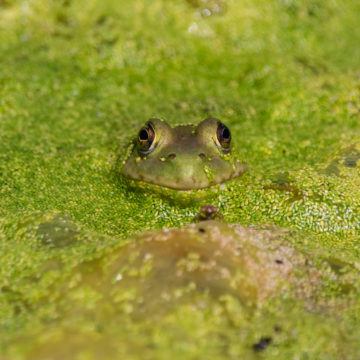by David S. Greer
1And the Lord spake unto Moses, Go unto Pharaoh, and say unto him, Thus saith the Lord, Let my people go, that they may serve me.
2And if thou refuse to let them go, behold, I will smite all thy borders with frogs.
3 And the river shall bring forth frogs abundantly, which shall go up and come into thine house, and into thy bedchamber, and upon thy bed, and into the house of thy servants, and upon thy people, and into thine ovens, and into thy kneading troughs.
4 And the frogs shall come up both on thee, and upon thy people, and upon all thy servants.
King James Bible, Exodus 8

The negative reputation suffered by frogs during Biblical times hasn’t improved much since. Macbeth’s three witches made a point of tossing into their bubbling cauldron not only toe of frog but also an entire venomous toad (a frog by another name). In later fairy tales, princesses kissed frogs with reluctance, and only when required to break a spell. Even today, the ickiness factor of frogs remains high for anyone leery of creepy-crawlies, even though more frogs means fewer spiders. And most people still wouldn’t welcome a clammy frog in their bed, let alone in their kneading trough.
The American bullfrog (Lithobates catesbeianus), to name but one of the planet’s 5,000-plus frog species, has a face no one but a mother could love. And when that face originates from just one of 20,000 eggs, the mother can hardly be blamed for failing to even recognize her offspring’s features, a fact that might go a long way towards explaining why American bullfrogs have a fondness for eating their progeny, whether at tadpole stage or in froggy maturity. Life as a carnivorous frog usually means no exceptions for children or cousins or aunts. Eat or be eaten is the watchword of the frog and not a bad rule to remember for species hoping to survive and evolve to some more advanced form of life. It has always been thus. Read more »
